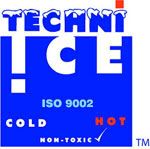This is a delicious pineapple ice cream to try and you don't need an ice cream maker. Recipe from
Back to the Cutting Board.
 Pineapple Upside Down Cake Frozen Yogurtadapted from David LebovitzIngredients
Pineapple Upside Down Cake Frozen Yogurtadapted from David LebovitzIngredients16 oz. fresh pineapple, cut into chunks
2/3 cup sugar
2 tsp. vodka (This is optional, it’s supposed to help make the ice cream softer after it’s frozen, but I didn’t use any and mine turned out perfectly soft)
1 cup low-fat Greek-style vanilla yogurt (you can use regular instead of low-fat to get an even creamier consistency)
1/2 cup half and half (I’d reduce this to 1/4 cup if using regular yogurt)
2 tbsp. orange juice
Butterscotch Saucefrom How to Cook Everything by Mark Bittman3/4 cup half and half (use heavy cream, if you’re not concerned with keeping the fat/calories down)
6 tbsp. unsalted butter, cut into pieces
3/4 cup brown sugar
Pinch of salt
Process1. In a medium bowl, mix together pineapple, sugar and vodka (if using). Cover with plastic wrap and set aside for 2 hours (at room temp), stirring a few times.
2. After the 2 hours, pour pineapple mixture into a blender along with the yogurt, half and half and juice. Mix well.
3. Pour mixture through a fine-mesh strainer (to get out any pulp, seeds, etc.) into a medium metal or plastic bowl, preferably one with a cover. If you don’t have a cover for it, then cover with plastic wrap.
4. Place in freezer to chill. After an hour, take it out and use a hand mixer or a sturdy whisk to whip it vigorously (you’ll get the best results with the mixer). Make sure to break up all the frozen sections around the edges. This may seem counter-intuitive, but this helps make it really creamy in the end. Put back in the freeze.
5. Keep checking every 45-60 minutes and whipping/breaking it up. It took me 4-6 hours of total freezing time to get it to the right consistency. It depends on how hard you want it to be.
6. When the frozen yogurt gets to a consistency you are happy with, start making the butterscotch. (Though you can make it earlier and just heat it up when you need it. It keeps up to a week in the fridge.) Combine half and half and butter in a small saucepan, cook over medium-low heat, stirring occasionally, until butter is melted.
7. Add in sugar and salt. Stirring frequently, cook until the mixture is thicker and shiny, about 10 minutes.
8. Set aside to cool off. You want it to be warm (so it’s smooth and easy to pour) but not hot (you don’t want to melt the frozen yogurt too much).
9. Slowly pour in 3/4 cup of the butterscotch (that’s about half of what you made), gently folding it into the frozen yogurt using a spatula. Don’t whip/stir anymore or it’ll just get mixed up in there. You are aiming for swirls of butterscotch throughout.
10. Put back into the freezer to harden for another 30 minutes to an hour. Scoop out into bowls and top with the remaining butterscotch sauce (warmed up).
Makes 1 quart


























